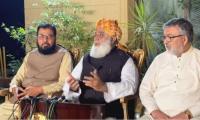“The great challenge to Afghanistan’s future is not the Taliban, or the Pakistani safe havens or even an incipiently hostile Pakistan. The existential threat to the long-term viability of modern Afghanistan is corruption”, General John R Allen, former commander of NATO International Security Assistance Force (ISAF) in Afghanistan told a US Senate Foreign Relations subcommittee in 2014. He further stated that the insurgents, criminal patronage networks, and drug traffickers had formed “an unholy alliance”.
The incredibly swift fall of Kabul, indeed a new Saigon moment in American history, has simply stunned the world as US intelligence reports had warned and security pundits had predicted that the Taliban could be a at the gates of Kabul in 90 days. Now it is for future PhD scholars and research fellows in global academic and policy think tanks to comprehensively explore as to what led to the victory of the Taliban and why the Afghan government and security forces could not offer even the slightest of resistance and collapsed with a surprisingly fast pace.
Was it ideology? But both parties are Muslims and Afghan blood runs in their veins. Was it unwavering commitment to goals, support of foreign (and of course domestic) actors, appeal of alternative narratives or power of propaganda that the Taliban had and the Afghan government lacked? Let’s wait for further investigations, revelations, and future research.
Simply put, there are multiple factors that led to the hasty collapse of the Afghan government. There was an abysmal malaise of corruption in the state and society developed and nurtured by the ‘war and foreign aid’ architecture. Although massive foreign aid from the US and the international donor community has roughly doubled the size of the country’s economy, it did not translate into a fair and healthy society as the benefits were disproportionately and inequitably distributed.
As is the norm and established policy and practice in the aid and development industry, developmental projects are mostly given out to contractors of foreign origin, usually belonging to donor countries. In the case of Afghanistan, about 40 percent of the aid funds were usurped by consultant salaries and corporate profits. According to one study, “the cost of employing an expatriate in Afghanistan amounted to roughly $250,000 per year which is about 200 times the average annual salary of an Afghan civil servant, who is paid $1000 per year”.
Both Western development experts and consultants as well as local elites are responsible for lavishly and unscrupulously spending foreign aid funds in ill-conceived, unsustainable and useless ventures with little dividends for the actual intended beneficiaries. There was little real commitment to state-building among the Afghan elite and foreign consultants. Most of them were filling their own deep pockets in the bonanza of foreign aid.
According to a report of the Special Inspector General for Afghanistan Reconstruction (SIGAR), the bulk of the aid funds have been wasted on development interventions that were poorly conceived or riddled with staggering corruption. “American dollars went to build hospitals that treated no patients, to schools that taught no students (and sometimes never existed at all) and to military bases the Afghans found useless and later shuttered”, revealed the report.
A classic mismatch in aid and need for aid in Afghanistan is the fact that, despite 80 percent of the population being directly or indirectly dependent on agriculture, only about $400-500 million have been allocated for the purpose. Despite tens of billions of dollars in development assistance, a quarter or more of Afghans are unemployed and Afghan maternal mortality remains among the highest in the world, while life expectancy is among the lowest. With over 4.6 million refugees across the globe, Afghanistan is still one of the largest sources of illegal migration.
“SIGAR calculates that the United States had committed more funds to reconstruct Afghanistan, in inflation-adjusted terms, than it spent on 16 European countries after World War II under the Marshall Plan”, the report asserts. At the same time, the report lamented that Afghanistan was beset by unbridled corruption.
Given the situation, Transparency International has regularly ranked Afghanistan among the most corrupt countries in the world based on the Corruption Perception Index. When Transparency International ranked Afghanistan as the third most corrupt country in the world during the regime of Hamid Karzai, he was asked by BBC’s Yalda Hakim in an interview about the legacy of corruption his tenure was leaving behind. A shrewd Hamid Karzai threw a classical red herring by stating that rather than the Afghans, corruption was perpetrated by “contracts, subcontracts and blind contracts” of foreigners who worked in this country.
Remember, all this was happening under the very nose of the US and its allies who ‘liberated’ Afghanistan to make it a new bastion of democracy and human rights. Lofty ideals indeed. But to see the actual scorecard, after spending billions of dollars for 20 long years, pictures of desperate people at the Kabul airport are sufficient. In his book titled ‘The duel: Pakistan on the flight path of American power’, Tariq Ali has stated that “what is missing is a Pakistan lobby, a strong group within the ruling class that puts the interests and needs of the country and its citizens above all else”. This can be aptly applied to Afghanistan. Unfortunately for decades, key ruling elites in Afghanistan have had their loyalties elsewhere.
What does the future have in store for poor Afghans now? The country needs a broad-based national government with representation of all ethnicities and factions. The Taliban must realise that it will be naive to get international recognition and credibility sans a truly representative government. They must protect and ensure the rights of women and minorities. No country can survive and thrive if the cream of that society is forced to flee their homeland. Therefore, the educated class consisting of professionals like doctors, engineers, scientists, academics and media people should not run away from their country. It is high time to stay there and help their motherland in whatever capacity they can. Unfortunately, it is mostly this class of people that has the necessary resources enabling them to abandon their country for good.
I have seen Afghan friends excelling in health, academia, media, businesses and other diverse fields and professions in New Zealand, Australia, the US, UK and in many European countries. They have all the ingredients and tremendous qualities of head and heart to attain marvelous accomplishments in very challenging situations. The international community must not abandon Afghanistan but it needs to engage it for the bright future of its people and safety and stability of the entire region and beyond.
The writer holds a PhD from Massey University, New Zealand. He teaches at the
University of Malakand.
Email: muradali.uom@gmail.com
Students, progressive groups – let’s call them the ‘Toothless’ – are usually at receiving end
Ratan Tata opened his eyes in Zoroastrian family on December 28, 1937 during British Raj
Federal government is authorised to deploy the army under Article 245 initially
World Resource Institute has suggested five priorities should inform the new NDCs
This achievement is more than just economic; it reflects strategic vision rooted in resilience and innovation
Govts need to realise that hundreds of millions of people on both sides of do not want permanent state of hostility...







